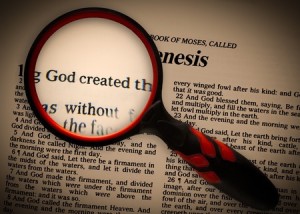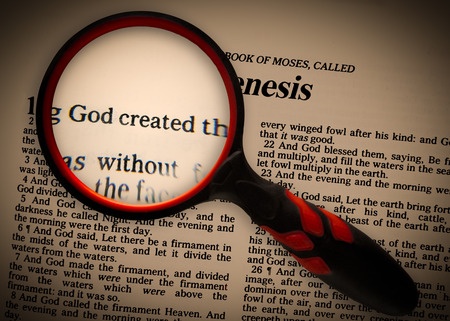
“If as the Bible teaches, the most important thing about man is that he is inescapably related to God, we must judge as deficient any anthropology which denies that relatedness.” (Anthony Hoekema, Created in God’s Image, p. 4)
From the perspective of Christian theology, anthropology refers to the study of humanity in relationship to God. This is different from the social science of anthropology, which deals mostly with a comparative study of the physical and social characteristics of humanity across space and time. Christian anthropology has a self conscious, biblical starting point with God. But the social science of anthropology intentionally disregards any reference to God. So understanding what the significance that humans were “created in the image of God” (Genesis 1:27) is crucial for a biblical sense of human nature. The silence of social sciences like anthropology and psychology on this matter means to Anthony Hoekema that they are biblically deficient.
In his essay “Man in the Image of God,” John Murray said that humans are persons, and therefore self-conscious, rational, free, moral and religious agents. As moral agents, we are responsible. And we are under obligation to obey the will of God in every moment of our life because we were created in the image of God. “It is the metaphysical likeness to God that grounds obligation, and the fulfillment of obligation consists in conformity to the image of God.”
Being made in the image of God is used uniquely of human beings in Scripture and thus sets us apart from other creatures. Regardless of how humans anthropomorphize other animals, there is a radically different nature between a human being and a squirrel, a fish and even an ape. We may share over 98% of our DNA with chimpanzees, but we don’t share the image of God.
The Old Testament repeatedly speaks of God in terms of human life and experience. Various parts of the human body, such as hands, eyes and ears are attributed to Him; as also are physical actions such as laughing, smelling, whistling. God is said to feel the emotions of hatred, anger, joy and regret. Relational and socio-cultural aspects of being human are used in reference to God as well. God is a warrior; a shepherd; a refuge; a stronghold.
These and other anthropomorphisms “are by no means naturally reversible into thoughts of man sharing the shape of God.” They do not enable us to construct a picture of Yahweh’s physical appearance. God is pure spirit (John 4:24). He is not part spirit and part body as humans are. “He is simple spirit without form or parts, and for that reason he has no physical presence. In The New Bible Dictionary, R.A. Finlayson said: “When we say that God is infinite spirit, we pass completely out of the reach of our experience. We are limited as to time and place, as to knowledge and power. God is essentially unlimited, and every element of his nature is infinite.”
Yet, if we didn’t speak of God in physical terms, we could hardly speak of God at all. So we must speak metaphorically or analogically of God. We look to what we know and understand in creation to get a glimpse of what God is like. And we do so because that is how God has revealed himself to us (Romans 1:19-20).
When Israel stood before God at Horeb, they heard the sound of words, but saw no form (Deuteronomy 4:12). When God appeared in theophanies, he was seen in human form, but without a suggestion this was anything but a temporary manifestation (Genesis 18). In Ezekiel’s vision of the glory of the Lord, although His likeness was human in appearance, from the waist up it was like gleaming metal. From the waist down, it was like fire (Ezekiel 1:26-27). Rather, these characteristics draw our attention to the personhood of God. In his article, “The Image of God in Man,” D. J. A. Clines said: “Yahweh is depicted in human terms, not because He has a body like a human being, but because He is a person and is therefore naturally thought of in terms of human personality.”
But at the same time that human beings are to some degree like God, we are also creatures of God. So, to be created in the image of God means that we are created persons; we are simultaneously creatures and persons. Anthony Hoekema described this paradox as the central mystery of humanity. As creatures, we are totally dependent upon God who created us. God gives us breath and life and everything else. “In him we live and move and have our being.” (Acts 17:25, 28) As persons, made in his image and likeness, we can make decisions, set goals, and move in the direction of those goals. In this sense, Hoekema said we have “a kind of independence—not absolute but relative.” He urged us to keep both of these truths in focus within our theological understanding of humanity.
This image and likeness establishes humanity’s role on the earth and facilitates communication with the Divine. God gave us ears to show that He hears our cries; eyes to show He sees our plight (Psalm 94:9). Human beings are then theomorphic, meaning that we are made by God to be like God. This imaging is just that: a faithful and adequate reflection, but not a reproduction of God or any of his attributes. The personhood of humans is reflective of God’s personhood. It will have some correspondence; there will be real and true associations, but never identity of being.
As Cornelius Van Til puts it in An Introduction to Systematic Theology: “Man’s being is analogical of God’s being.” We do not have even the tiniest spark of a divine attribute within us. The Creator-creature distinction is inviolate: “Nothing can exist in man just as it exists in God.” For His thoughts are not our thoughts; his ways are not our ways (Isaiah 55:8-9). The Creator-creature distinction is thus theologically and philosophically essential to a right and proper view of human nature. So while there will be true and real correspondence between human nature and God (since we are made in His image and likeness), there cannot be identity of being.
So human beings are created persons, made in the image and likeness of God so that we can truly know Him. As creatures, we are not God and we depend upon Him for our very existence. As persons, we are like God, who made us to reflect or image him. Aspects of our being which include our physical, emotional and psychological makeup are reflective of God’s personhood, but never identical to it. We cannot and should not emphasize one aspect of our being over another as we consider what it means to be made in the image of God. To do so would be in violation of God’s creative purposes.
Anthony Hoekema suggested that there were two general types of non-Christian anthropologies, idealistic and materialistic. Idealistic anthropologies consider human beings to be primarily spirit; and see the physical body as foreign to his or her real nature. In Platonic thought, what was real about a human being was his or her intellect or reason; which was viewed as a divine spark within the person that continued after the body died. So the body was a hindrance to the spirit and one was better off without it. In psychology, this understanding of human nature underlies the Gnosticism of Carl Jung’s writings. According to Hoekema, “Those who hold this view teach the immortality of the soul but deny the resurrection of the body.”
Materialistic anthropologies, which Hoekema said were more common today, see human beings as composed of material elements. Therefore his or her mental, emotional, and spiritual life is a simple by-product of this material structure. There is no “soul;” no immaterial aspect of human nature. So-called “mental” illnesses are simply biochemical imbalances. God is a projection of the human mind, which is itself wholly an evolutionary phenomenon. Both Sigmund Freud and B.F. Skinner articulated views of human nature consistent with materialistic anthropology.
These two categories of anthropology, idealistic, and materialistic, emphasize one aspect of humanity at the expense of others. Idealistic anthropologies accentuate one’s soul or reason, while minimizing the full reality of his/her material structure. Materialistic anthropologies absolutize the physical part while denying the reality of what we see as the “mental” or “spiritual” side of humans. Both of these errors proceed from a marginalization or denial of the existence of God; and a failure to consider how humans are related to Him. Where these anthropologies view one aspect of human existence to be ultimate and apart from any dependence upon God, they are guilty of idolatry. As Oswald Chambers has said, “The disposition of sin is not immorality and wrong-doing, but the disposition of self–realization—I am my own god.” So what motivates humans to do what we do—the same thing at times. We want to be independent from God.
An awareness of what it means to be created in the image of God and to hold to it even when non-Christian anthropologies seem persuasive in their explanatory power is essential for a biblical view of the modern social sciences. Its application extends beyond just anthropology and psychology to political science, economics, and history.





